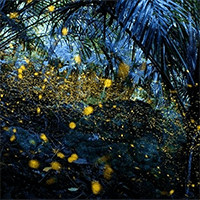- Age 3~Age 100
- Within 1 hour
- 10:00 / 13:00 / 15:00
Waplus Nara is a 2-minute walk from JR Nara Station and a 10-minute walk from Kintetsu Nara Station. It is in a very convenient location. Come empty-handed ♪ We offer a special time to enjoy traditional Japanese beauty to your heart's content. Experience the traditional beauty of Japan through the tea ceremony. While learning the spirit of tea ceremony, you will also savor the depth of Japanese culture. You can spend an elegant time with Japanese sweets. ~Experience process~ History talk → Tea talk → Tea making → Japanese sweets and tea *Souvenirs available
- Age 6~Age 100
- 3~4 hours
- 09:00 / 14:00
"Ko-Iga" is the highest peak of pottery in history, known as "exceptional beauty" in the world of tea ceremony, mainly during the Sengoku period, when Sen no Rikyu, Oda Nobunaga, and Toyotomi Hideyoshi were active, and the Azuchi-Momoyama period. Experience Awaji Iga making, a reproduction of the Ko-Iga making used in tea ceremony at that time, with one-on-one guidance from a craftsman who hand-made the largest six-tiered climbing kiln in Japan. Ko-Iga is fired at the world's highest firing temperature of 1400℃ for several days, which is unparalleled in the world, so the shape is distorted and sometimes it breaks when firewood is repeatedly hit against it, but the absolute presence and scenery that surpasses this are known as exceptional beauty. (*250℃-450℃ in a bonfire, 1500℃ in a blast furnace) Awaji Iga aims to revive Ko-Iga and values the invisible process and value, so it does not use modern tools such as burners and thermometers, or glazes that glassify the surface. During the Sengoku period, wars were taking place all over Japan, but no one really wanted war, and tea ceremonies served as a place for secret talks to avoid war. It is said that Ko-Iga was used as a special tool to hold a special tea ceremony, which could avoid war if successful, or lead to war if unsuccessful. At Tsurugi Kiln, you can experience the revival of Ko-Iga, which was used in tea ceremonies that determined history and people's lives and deaths, and the making of Awaji Iga pottery. *The actual experience is limited to the forming process. During the four days and nights of the kiln firing in February, you can visit the impressive site at any time. Please visit Awaji Island three times to enjoy the forming process, the kiln firing in February, and the collection after April. ■Itinerary 1. Decide what to make 2. Knead the clay 3. Shape, make strings, hand-form, and make balls *The actual experience is limited to the forming process. During the kiln firing in February, you can see the items you made yourself. *As the items are fired once a year during the kiln firing in February, they will be handed over after spring.
- Age 6~Age 75
- 1~2 hours
- 10:00 / 12:00 / 14:00 / 16:00 / 18:00 / 20:00
-Tea CeremonyZen is alive and well in traditional Japanese culture, and by learning the tea ceremony, you will learn etiquette, manners, beautiful gestures, and the spirit of hospitality. who will be treated with hospitality.- You will be asked to serve tea to the guests with an awareness of the mindset and manners of the tea master.-CalligraphyZen exists as a visual trace. “hane,” and “harai” will be taught.-Choose a Japanese kanji of your choice and practice writing it according to the stroke order.-With what you have learned so far in mind, write your chosen kanji on the calligraphy paper.
- Age 10~Age 70
- 2~3 hours
- 11:00 / 14:00 / 17:00 / 20:00
Calligraphy/Samurai Calligraphy/Tea Ceremony/which is related to ZenIaido and Armor, both of which are related to Bushido.This plan allows you to experience all of these.-Practice calligraphyLearn how to prepare yourself for calligraphy, and practice how to hold a brush and use tools.Practice basic brush strokes such as “tome”, “hane”, and “harai”.Choose a Kanji character and follow the stroke order to practice.-Samurai Calligraphy When a samurai foresaw his death, he reflected on his life and wrote down his last words on earth with a brush.-Tea CeremonyThe master of the tea ceremony prepares and powdered green tea to the guests.This is a great way to learn etiquette, manners, beautiful gestures, and the spirit of hospitality.-Samurai Sword Trial CuttingYou will learn how to use a sword and become aware of your self-respect and the responsibility of carrying a deadly weapon.Try your hand at slashing. Experience the best cutting edge in the world.-Wearing ArmorIn April 1615, the “Osaka Summer Battle” began. You, a member of Toyotomi's side, will wear a suit of armor and participate in the battle. You will be photographed on the grounds of Osaka Castle, pretending to be the b,
- Age 0~Age 100
- Within 1 hour /1~2 hours
- 11:00 / 12:00 / 13:00 / 14:00 / 15:00 / 16:00 / 17:00
It is a plan where you can learn the basics of the tea ceremony while having tea and sweets. Perfect for those who are new to the tea ceremony. One person can participate, but two people more Then it becomes cheap. Time required Takes 30 to 90 minutes.
小学生の息子が茶道に興味を持ったので、せっかくなら本格的な茶室のあるところで体験してみようと思い申し込みました。茶道の成り立ち、抹茶の製造方法、そしてお茶席での流れを丁寧に解説しながら参加させて頂き、大満足でした。和菓子と薄茶もびっくりする位美味しかったです。 The host will take you through the full process of a tea ceremony, in an authentic tea room. Even though there might be a language barrier, you can still enjoy the beauty of your surroundings, and the tasty matcha and sweets. I participated with my 11 yr old, and it's a great cultural experience for kids too.
- Age 15~Age 90
- 1~2 hours
- 10:30 / 13:00 / 16:00
How about trying on a kimono at Machiya Juku, a Japanese space and time near Higashi Chaya District, and enjoying the world that spreads out from a cup of tea? Escape from everyday life and step into a quiet tea room to discover a new side of yourself. It seems that there are not many houses with tatami mats these days, and the Japanese-style space of a machiya is nostalgic like grandma's house, and it will be fresh for young people. You can learn various Japanese gestures that are useful to remember, such as how to say hello, open and close the fusuma, how to walk and sit on the tatami. This is a Japanese lesson that will definitely come in handy when you are invited, in a slightly formal seat, or in a business setting. Why don't you experience it as a memory of your trip? Not only women but also men are welcome. [Experience flow] ① Dressing (about 30 minutes) ↓ ② How to enter the tea room, see the alcove, tools, how to walk (10 minutes) ↓ Follow the flow of the tea ceremony (about 40 minutes) ③ Have the main sweets ↓④How to have tea↓⑤How to have dried sweets↓⑥How to have tea
- Age 3~Age 100
- 1~2 hours
- 13:30
Would you like to try making Muchi, a traditional Okinawan sweet? Muchi is a soft rice cake wrapped in aromatic shell ginger leaves (sannin), steamed to perfection. This cozy experience invites you to enjoy the gentle scent of the leaves, the warmth of island life, and the joy of making something with your hands.Perfect for first-timers and families. You'll get to taste your handmade Muchi on the spot.Come and enjoy a peaceful, heartwarming time in Okinawa's kitchen!
- Age 3~Age 80
- Within 1 hour
- 10:00 / 11:00 / 12:00 / 13:00 / 14:00 / 15:00 / 16:00
In this plan, customers can grind matcha with a stone mill and enjoy the matcha with Japanese sweets and friends. We use high-grade Uji matcha for yen kg, and we can speak foreign languages. Even beginners can experience the "tea ceremony" of traditional Japanese culture with peace of mind.
- Age 10~Age 80
- 2~3 hours
- 10:00 / 11:00 / 13:00 / 14:00
A Japanese culture experience plan (tea ceremony, kimono, kimono walk) where you can experience Japanese culture at a convenient location just a 1-minute walk from Kawaguchiko Station. After the tea ceremony experience, it is a plan where you can enjoy walking and taking selfies while feeling the bustle and seasons around Lake Kawaguchi. The minimum number of participants is 2 people. This plan allows children and men to experience the experience without wearing a kimono. ~ Flow of the day ~ ① Easy dressing & costume selection 15 minutes ② Tea ceremony experience Matcha & Japanese sweets tasting 20 minutes ③ Walking around Lake Kawaguchi wearing a kimono 90 minutes ④ Changing clothes 3 minutes
- Age 6~Age 75
- 1 Day or more
- 14:00
A 2-day, 1-night tour of Omikawa-tei, an old folk house with a history of over 150 years since the Edo period, located in Tako-cho, Chiba Prefecture, with overnight stay. On the first day, participants enjoyed sweets and coffee at a cafe in the town, followed by a tour of a Japanese temple and a Japanese sweets making experience. After checking in, guests will enjoy Japanese cultural experiences (tea ceremony, calligraphy, etc.), Tako rice rice ball making experience, and dinner at the accommodation facility, Omikawa-tei. The next day, we will stop at roadside stations and other places while touring the rural scenery of the town.
- Age 13~Age 90
- 2~3 hours
- 12:00
A historically designed Kyoto townhouse can be rented exclusively for four or more people. You can spend a luxurious time. You can enjoy a special and unique experience of watching the beautiful dance of the maiko, traditional Japanese games, and Japanese cuisine prepared by a chef to your heart's content. Enjoy an elegant time with your family and loved ones in a secluded space. After watching the performance, you can enjoy matcha tea and Japanese sweets with the maiko and take photos. Please feel free to spend your time while enjoying the elegant Kyoto dialect of the maiko.
- Age 12~Age 100
- 5~6 hours
- 15:30
Shizuoka has flourished as a post town on the Tokaido road since the Edo period and as a tea-producing region. Please enjoy the unique "Chaji" experience that continues to cherish the history and culture of Shizuoka through local daily life and festivals. "Chaji CHAJI ~ Iki~" is a top-class banquet where you can fully enjoy the culture of a post town on the Tokaido road.・Duration: Approximately 5 hours ・Meals: Traveler's Kaiseki ・Traditional performing arts: Either Nagauta, Shamisen or Japanese dance ・General schedule: ⑴ A curator or local guide will introduce and explain the local history and culture of the Tokaido post town, which has been nurtured by the tea industry ⑵ A performance of one of the traditional performing arts, Nagauta, Shamisen or Japanese dance, which has been passed down in the culture of the post town ⑶ Kaiseki cuisine that pairs well with green tea and local sake ⑷ A tea ceremony with local sencha and sweets by a tea farmer or tea master ~Experience flow~ Experience a banquet "Chaji" where you can enjoy "Shizuoka green tea", the number one tea producing region in Japan, and "400 years of Tokaido post town culture" Iki plan *We will pick you up by taxi from Kakegawa Station, Shimada Station, or your accommodation in Kakegawa or Shimada city. ●Meeting place: Fujibun (Kakegawa City) or Sakurai Residence (Shimada City) 15:30●Greetings and explanations 15:30 - 16:00 Introducing the unique story of Tokaido post town culture and tea culture in this area ☆Kawasakaya (Kakegawa City): Guided tour of Hizaka-juku in the Edo period by the Kawasakaya Association and performance of Hizaka Mago Utagi ☆Oigawa Kawagoe Ruins (Shimada City): Guided tour of the Kawagoe system in the Edo period while touring the meeting hall, jin'ya, Sakurai Residence, etc. ●Yorozuya (Kakegawa City) or Sakurai Residence (Shimada City) 16:10 - 17:10 Traditional performing arts performance Either shamisen, nagauta, or Japanese dance ●Fujibun (Kakegawa City) or Sakurai Residence (Shimada City) 17:20 - 18:20 ☆Tea party with local sencha *A recreation of "ame no mochi" (candy rice cake), which is said to have been a favorite of Tokugawa Ieyasu, will be served as a tea snack. *Kappo Uomitsu (Kakegawa City) or Sakurai House (Shimada City) 18:40 - 20:00 ☆Kaiseki cuisine that combines green tea and local sake ☆After greetings, disband around 20:10 *We will take you by taxi to Kakegawa Station, Shimada Station, or your accommodation in Kakegawa or Shimada City. *The itinerary may change depending on the season, weather, and other circumstances, as well as the venue.
- Age 12~Age 100
- Over 6 hours on the day
- 14:00
Shizuoka has flourished as a post town on the Tokaido road since the Edo period and as a tea-producing region. Please enjoy the unique "Chaji" experience that continues to cherish the history and culture of Shizuoka through local daily life and festivals. "Chaji CHAJI ~Hana~" is a top-class banquet where you can fully enjoy the culture of Tokaido post towns. Duration: Approximately 6 hours Meal contents: Kaiseki cuisine for senior retainers Traditional performing arts: Nagauta, shamisen or Japanese dance. Performing arts experience: Experience either shamisen or Japanese dance. Outline schedule: 1. Explanation and guide from producers at tea plantations cultivated using the Chagusaba method, a World Agricultural Heritage System. 2. Explanation and guide from curators and local guides about the history and culture of the Tokaido post towns and tea industry. 3. Performance of one of the traditional performing arts passed down in the post town culture: Nagauta, shamisen or Japanese dance. 4. Kaiseki cuisine that pairs well with green tea and local sake. 5. Tea ceremony with local sencha and sweets by tea farmers or tea masters. ~Experience flow~ Experience a banquet "Chaji" where you can enjoy "Shizuoka green tea", the number one tea producing region in Japan, and "400 years of Tokaido post town culture". Hana Plan *We will pick you up by taxi from Kakegawa Station, Shimada Station, or your accommodation in Kakegawa or Shimada City. 00~17:10 English: ●Meeting place: Fujibun (Kakegawa City) or Sakurai Residence (Shimada City) 14:00●Greetings and explanations Learn about the unique stories of Tokaido post town culture and tea culture in this area 14:00 - 14:20 → (Travel by private vehicle) → ●Tea fields A tea farmer will explain local tea cultivation 14:35 - 15:05 (Tea picking experience depending on the season) → (Travel by private vehicle) → ●Kawasakaya (Kakegawa City) or Sakurai Residence (Shimada City) 15:20 - 16:00 Kawasakaya: Guided tour of Hizaka-juku in the Edo period by the Kawasakaya Association and performance of the Hizaka Mago-uta song Oigawa Kawagoe Ruins: Guided tour of the Kawagoe system in the Edo period while touring the meeting hall, jin'ya, Sakurai Residence, etc. ●Yorozuya (Kakegawa City) or Sakurai Residence (Shimada City) 16:10 - 17:10 Traditional performing arts performance and experience Either shamisen, Nagauta, or Japanese dance ●Fujibun (Kakegawa City) or Sakurai House (Shimada City) 17:20 - 18:20 ☆Tea party with local sencha tea ※A tea snack made with a replica of "ame no mochi" (candy mochi), which is said to have been a favorite of Tokugawa Ieyasu ●Kappo Uomitsu (Kakegawa City) or Sakurai House (Shimada City) 18:40 - 20:00 ☆Kaiseki cuisine with a marriage of green tea and local sake ☆After greetings, disband around 20:10 ※We will take you by taxi to Kakegawa Station or Shimada Station or to your accommodation in Kakegawa or Shimada City. ※The itinerary may change depending on the season, weather, and other circumstances, as well as the venue.
- Age 12~Age 100
- Over 6 hours on the day
- 13:00
Shizuoka has flourished as a post town on the Tokaido road since the Edo period and as a tea-producing region. Please enjoy the unique "Chaji" experience that continues to cherish the history and culture of Shizuoka through local daily life and festivals. "Chaji CHAJI ~ Miyabi ~" is a top-class banquet where you can fully enjoy the culture of a Tokaido post town. Duration: Approximately 7 hours Meal content: Lord's kaiseki cuisine Traditional performing arts: High-class kimono, Nagauta, shamisen, and Japanese dance Performance experience: Shamisen and Japanese dance experience Outline schedule: 1. Explanations and tours from producers at tea plantations cultivated using the Chagusaba method, a Globally Important Agricultural Heritage System 2. Curators and local guides introduce the history and culture of this Tokaido post town, nurtured by the tea industry 3. A performance of traditional performing arts that are passed down in post town culture, such as Nagauta, shamisen, and Japanese dance 4. Experience the kimono culture that has been cultivated in Shimada-juku, famous for its obi festival that has been passed down since the Edo period, by trying on a kimono 5. Kaiseki cuisine that pairs well with green tea and local sake ⑹ Tea ceremony with local Sencha tea and sweets by a tea farmer or tea master. ~Experience process~ *We will pick you up by taxi from Kakegawa Station, Shimada Station, or your accommodation in Kakegawa or Shimada City. 00~17:10 English: ●Meeting place: Fujibun (Kakegawa City) or Sakurai Residence (Shimada City) 13:00●Greetings and explanations Learn about the unique stories of Tokaido post town culture and tea culture in this area 13:00 - 13:20 → (Travel by private vehicle) → ●Tea fields A tea farmer will explain about local tea cultivation 13:30 - 14:10 (Tea picking experience depending on the season) → (Travel by private vehicle) → ●Kawasakaya (Kakegawa City) or Sakurai Residence (Shimada City) 14:30 - 15:00 Kawasakaya: Guided tour of Hizaka-juku in the Edo period by the Kawasakaya Association and performance of the Hizaka Mago-uta song Oigawa Kawagoe Ruins: Guided tour of the Kawagoe system in the Edo period while touring the meeting hall, jin'ya, Sakurai Residence, etc. ●Yorozuya (Kakegawa City) or Sakurai Residence (Shimada City) 15:10 - 17:10 Traditional performing arts performance and experience Shamisen, Nagauta, and dancing 15:20 - 16:20 ☆ Kimono dressing experience (limited number) 16:20 - 17:20 ● Fujibun (Kakegawa City) or Sakurai House (Shimada City) 17:20 - 18;20 ☆ Tea ceremony with local sencha ※ A reproduction of "ame no mochi" (candy mochi), which is said to have been a favorite of Tokugawa Ieyasu, is served as a tea snack ● Kappo Uomitsu (Kakegawa City) or Sakurai House (Shimada City) 18:40 - 20:00 ☆ Kaiseki cuisine with green tea and local sake ☆ After greetings, disband Around 20:10 * We will take you by taxi to Kakegawa Station or Shimada Station or your accommodation in Kakegawa City or Shimada City. * The itinerary may change depending on the season, weather, and other circumstances, and depending on the venue.
- Age 6~Age 83
- 1~2 hours
- 10:00 / 14:00
Would you like to experience the traditional Japanese culture of Ikebana in a room with a tea ceremony room? We have taken proper measures against COVID-19, so you can experience it with peace of mind. Since it is aimed at foreigners, it will be conducted in English. If there are 3 or more people, it will be held in the Japanese-style room on the second floor.
- Age 10~Age 60
- 3~4 hours
- 09:00
Enjoy traditional Japanese culture at Ryusenji Temple - Urasenke Matcha Tea Ceremony and Buddhist Sermon In this program, you can experience traditional Japanese culture to your heart's content in the calm space of Ryusenji Temple. After renting a kimono and learning how to put it on, you can experience how to make Urasenke-style matcha tea, and finally listen to a Buddhist sermon in Japanese and English. Experience flow: 9:00 Choose a kimono and try on your kimono Choose a kimono and have a professional staff member help you put it on. After getting dressed, it's time for a commemorative photo. Wear a beautiful kimono, take photos, and feel the tradition of Japan. 11:00 Urasenke Matcha Tea Ceremony Experience the traditional Urasenke matcha tea ceremony. Learn the spirit of Japanese tea ceremony by making and tasting matcha in a seiza position. You can also try making matcha yourself. 11:45 Buddhist Sermon You can learn the Buddhist teachings of Ryusenji Temple through a 15-minute sermon in English. You can feel the deep wisdom of Buddhism and peace of mind. 12:00 Q&A After the experience, if you have any questions, the monks will be happy to answer them. You can learn more about Buddhist teachings and culture.
最近チェックしたプラン
Please wait a moment
![[Nara/JR Nara Limited Time Offer] Experience the traditional beauty of Japan through a tea ceremony with a souvenir includedの画像](https://img.activityjapan.com/10/57768/10000005776801_nVWBMD2C_3.jpg?version=1739080564)
![[Hyogo, Minami Awaji] Experience making "Awaji Iga", a reproduction of "Ko-Iga", the highest peak of pottery in history, which was known as "exceptional beauty" in the world of tea ceremony mainly during the Sengoku period!の画像](https://img.activityjapan.com/10/58639/10000005863901_1Gz5AIDf_3.webp?version=1744257065)

![[By Osaka Castle] Hands-on class to learn Bushido & Zen with photoの画像](https://img.activityjapan.com/10/52543/10000005254301_2gpir8pD_3.jpg?version=1741009862)
![[Tokyo Komaba Todaimae] Tea ceremony experience perfect for the first time! Taste light tea and dried sweets in the tea room! 3 minutes on foot from the stationの画像](https://img.activityjapan.com/10/15417/10000001541701_ge9ffWmw_3.jpg?version=1581991124)
![[Ishikawa / Kanazawa] Experience tea ceremony and Japanese gestures in kimonoの画像](https://img.activityjapan.com/10/49782/10000004978201_atFOJjl6_3.png?version=1689662652)
![[Northern Okinawa] Let's make Okinawa's traditional sweet "Muchi"! Yuntaku (tea ceremony) together in an old-style houseの画像](https://img.activityjapan.com/10/58609/10000005860901_1Gz5AIDf_3.jpg?version=1744087213)

![[Yamanashi / Kawaguchiko] Experience the world of Japanese culture within a 1-minute walk from Kawaguchiko Station (tea ceremony, kimono, kimono walk)の画像](https://img.activityjapan.com/10/39299/10000003929901_nQK7VHy7_3.jpg?version=1694087298)
![[Chiba/Narita] Tako Town full 1 night 2 day tour with accommodation at Omikawa Residence <Transportation from Narita included>の画像](https://img.activityjapan.com/10/52852/10000005285201_lpXgdgDW_3.jpg?version=1707962882)
![[Kyoto, Nishijin] Kyoto Machiya plan limited to one group per day: "Kyoto cuisine, playing with a maiko, tea ceremony and Japanese sweets"の画像](https://img.activityjapan.com/10/55967/10000005596701_nfpLyiSA_3.jpg?version=1732536362)
![[Shizuoka/Kakegawa] Experience the "Chaji" banquet to enjoy "Shizuoka green tea" from Japan's number one tea producing region and "400 years of Tokaido post town culture" with the "Iki Plan"の画像](https://img.activityjapan.com/10/56772/10000005677201_AVWlGGNt_3.jpg?version=1730975102)
![[Shizuoka/Kakegawa] Experience the "Chaji" banquet to enjoy "Shizuoka green tea" from Japan's number one tea producing region and "400 years of Tokaido post town culture" Hana Planの画像](https://img.activityjapan.com/10/56748/10000005674801_AVWlGGNt_3.jpg?version=1730976666)
![[Shizuoka/Kakegawa] Experience the "Chaji" banquet to enjoy "Shizuoka green tea" from Japan's number one tea producing region and "400 years of Tokaido post town culture" Miyabi planの画像](https://img.activityjapan.com/10/56746/10000005674601_AVWlGGNt_3.jpg?version=1730976485)
![[Tokyo, Asakusabashi] Very popular! Private lessons in the downtown area "Ikebana experience for foreigners in a teahouse"の画像](https://img.activityjapan.com/10/19541/10000001954101_yJHaSiF2_3.jpeg?version=1730429942)
![[Akita, Noshiro] "Enjoy the scenery of the UNESCO World Heritage Site Shirakami-Sanchi" at the temple Ryusenji Temple with kimono rental and authentic matcha tea ceremonyの画像](https://img.activityjapan.com/10/56354/10000005635401_HPGOPfHa_3.JPG?version=1728771002)







